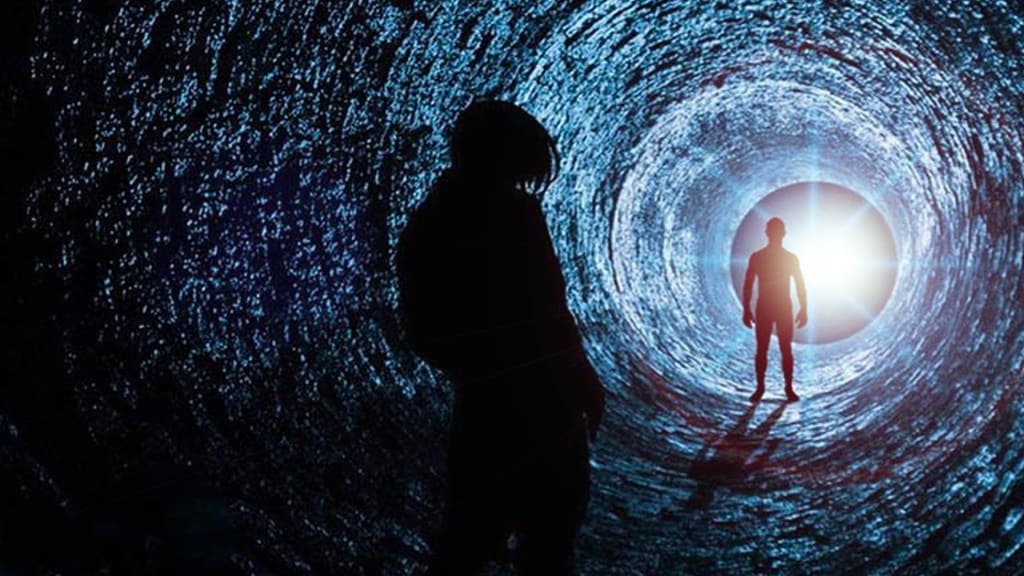What If You Came Across a Time Traveler?
Time travelers

If time travel is possible, why haven't we met time travelers yet? And if we did, how would we know they weren't faking it? What would their time machine look like, and how would it work? Do time travelers have to follow the rules? And what would happen if they decided to break them? This is what would happen if you met a time traveler in 1998 and did so. Mr. John Titor arrived from the future, or so he said in his timeline, because he claimed that General Electric succeeded in inventing time travel in the year 2034. He even introduced and described his time travel device in great detail, and then Tito disappeared as suddenly as he appeared. Did he complete his mission, or was he even real? How would we know? If we could prove that someone travelled from another time, that would be really cool for science, even if it replaced Albert Einstein's theory of relativity. Einstein approached time as a fourth dimension; space is a three-dimensional spectrum that gives us length, width, and height. Time gives direction; together they form a space-time continuum that can be affected by gravity according to Einstein's theory of relativity. Gravity is a curve in space-time, and technically, since space and time are one, gravity can bend both time and space, but it takes something really big to detect changes in the movement of time. If you somehow managed to get close to a black hole like Sagittarius, you would experience time half as fast as humans on Earth. That's because Sagittarius packs the mass of four million suns into an unspecified dense point, creating a very strong gravitational field around itself. Another way to travel through time is to move very fast. The closer you get to the speed of light, the slower time passes for you. If you were a passenger on a train that could somehow travel at 99% of the speed of light, for every year spent on the train, 223 years would have passed back at the station. That would make you a time traveler from the future. But how about travelling back in time, just like John Titor said he would? Titor claims that this machine makes time travel possible in any direction. C 204, as he called it, allowed him to manipulate gravity using two micro-solar singularities packed inside. It also had gravity sensors that locked the machine and the time traveler to a specific location in space. Tito put this machine in a car almost like in the old days, travelling in a DeLorean, but it only needs 60 years of its time. How do you know Titus actually travelled back in time and didn't just make it up? Proving that someone is actually a time traveler can be even more difficult than time travel itself. Time travelers could make future predictions, show off their futuristic technology, or even take a genetic test to back up their story. Perhaps the best way to demonstrate time travel is to take yourself on your next adventure. Of course, there are simpler ways to demonstrate the possibility of time travel. In 2009, world-renowned theoretical physicist Stephen Hawking threw a party — not just any party, but one where only future time travelers were invited. Hawking did not send the invitations until after the party because he believed that if future travelers arrived before the invitation was issued, it would prove time travel possible. One day he sat there and waited for hours, but no one showed up. This does not mean that time travel is impossible. It is possible that future time travelers will learn to use wormholes or bridges in space and time. We haven't seen any of them yet, but general relativity predicts their existence. The main problem with wormholes is that they are microscopic and collapse too quickly for a human traveler to pass through them, but perhaps the reason no one attended Hawking's party is that time travel isn't necessarily that precise. Maybe the guests arrived from the future but were late to the party, or going back in time is strictly forbidden for time travelers because if they do, they can completely change their timeline. Perhaps they are simply trying to avoid the risk of disease spreading to us from afar, or perhaps the knowledge of time travel is so advanced that few trust it. Perhaps travelling back in time is not possible; perhaps time can only move forward and never backward. Maybe John Titor told a big lie. There are still a few years left until 2034 to find out that there are already time travelers in our lives. Astronauts on the International Space Station travel at eight kilometers per second, so they age more slowly, although the difference is measured in hundreds of seconds. If you listen, you will be invited to a time-travelling reception hosted by Stephen Hawking. The celebration will take place at the University of Cambridge in Great Britain on June 28, 2009. No RSVP is required, and hey, if you have the chance to hop on a spaceship and enjoy the time travel effects of a black hole, do it. Make sure you don't run into that gravity monster, but that's a story for another day.
About the Creator
Durga Prasad
My "spare" time is spent creating for myself and writing for others.





Comments (1)
I have heard of the story about John Tutor before. It is interesting but I do suspect it's a hoax.